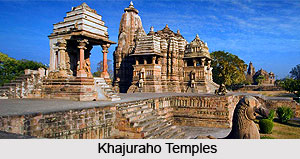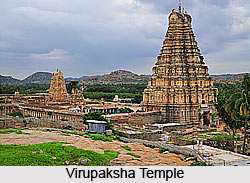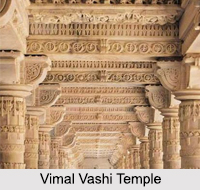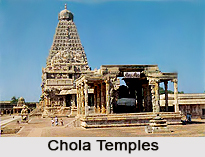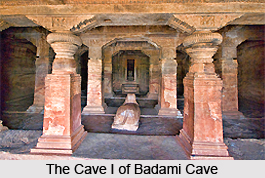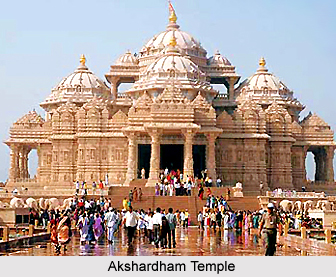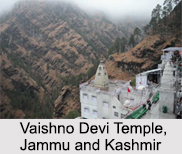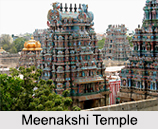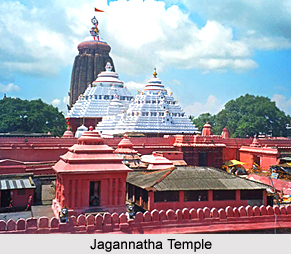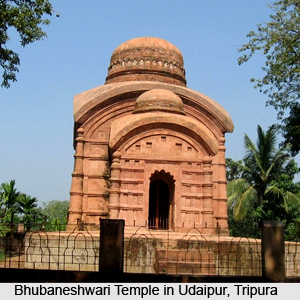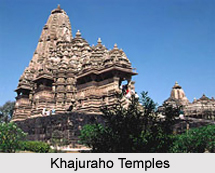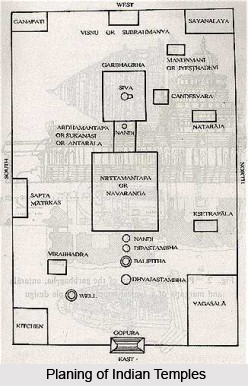 A Hindu temple consists of various parts and these are built keeping in mind those parts. The most important part of a temple is the `garbhagriha` or sanctum sanctorum. This part of a temple is usually of square shape with a low roof and with no doors or windows except for the front opening.
A Hindu temple consists of various parts and these are built keeping in mind those parts. The most important part of a temple is the `garbhagriha` or sanctum sanctorum. This part of a temple is usually of square shape with a low roof and with no doors or windows except for the front opening.
The temple contains the image of the deity in the geometrical centre. The whole place here is fully dark, except for the light that comes through the front opening. There is a small tower over the roof of the whole shrine. In the North Indian temples, this tower is quite high and it is of low or medium height in the South Indian temples. In some of the temples, a pradaksinapatha (a circumambulatory passage) is provided just round the garbhagriha, to enable the devotees to go round the deity. This passage is not available in the vesara temples.
In front of the garbhagriha and contiguous to it is the mukhamantapa, sometimes called sukanasi or ardhamantapa, depending upon its proportion relative to that of the garbhagriha. This is also used to keep the articles of worship including naivedya (food offerings) on special occasions. The other part of a typical temple is the `antarala`, a narrow passage connecting the garbhagriha and the mukhamantapa to the mantapa (pavilion or hall). But, in most of the temples, the antarala is identical with the mukhamantapa or sukanasi. The mantapa is also called nrittamantapa or navaranga and it is a big hall, which is used for congregational religious acts like singing, dancing, recitation of mythological texts, religious discourses and so on.
Another vital part of a temple is the dhvajastarhbha, which is in front of either the garbhagriha or antarala or the mantapa. It is said to represent the flag post of the `King of kings`. The lanchana (insignia) is another part of a temple, which is made of copper or brass fixed like a flag to the top of the post. It varies according to the deity in the temple. The lanchana has a figure of the vahana (carrier vehicle) of the residing deity. It is the figure of Nandi bull in case of Siva temples while it is the lion that finds its place in Devi temples. In Visnu temples Garuda gets that honour.
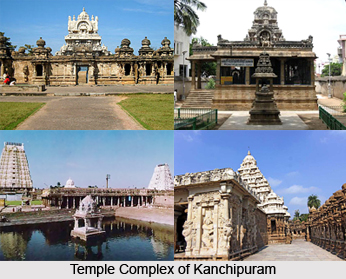 The balipitha (pedestal of sacrificial off ermgs) with a lotus or the footprints of the deity is one more vital part of a temple. It can be seen fixed near the dhvajastarhbha, but nearer to the deity. Red-coloured offerings like rice mixed with vermillion powder, are kept on this at appropriate stages during the performance of rituals. This is an indication of the feeding of the parivaradevatas (attendant and associate deities). A high wall (prakara) surrounds the temple with one main and three subsidiary gates, opening in the cardinal directions. These gateways are decorated with gopurams having high tower, which are sometimes called as the Cow-gate.
The balipitha (pedestal of sacrificial off ermgs) with a lotus or the footprints of the deity is one more vital part of a temple. It can be seen fixed near the dhvajastarhbha, but nearer to the deity. Red-coloured offerings like rice mixed with vermillion powder, are kept on this at appropriate stages during the performance of rituals. This is an indication of the feeding of the parivaradevatas (attendant and associate deities). A high wall (prakara) surrounds the temple with one main and three subsidiary gates, opening in the cardinal directions. These gateways are decorated with gopurams having high tower, which are sometimes called as the Cow-gate.
A typical Hindu temple contains minor temples or shrines inside the prakara, which are meant for the minor deities, connected with the main deity. For example, in a Siva temple, the minor shrines are dedicated to Ganapati, Parvatu Subrahmanya and Candesvara. Again in a Vishnu temple, Laksmi, Hanuman and Garuda find a place as minor deities. In a Durga temple, Siva, Ganapati and subrahmanya can be found.
Besides these, a typical Hindu temple include a yagnasala, (sacrificial shed), pakasala (cooking shed) and kitchen, place for the utsavamurti (processional image carried during the car festivals), well or a puskarinl (tank), flower garden, stores and other essential structures linked with the management of the temple as also the rituals. Another vital part of a Hindu temple is the `dipastambha` (lamp post), which often can be found in South Indian temples. It is situated either in front of the balipitha or outside the main gate. The top of this post has a bud shaped chamber to receive the lamp.
